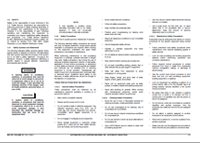Low level cognitive tasks can be performed following a detailed, step by step procedure. Written procedures are still the standard application. Most technicians tend to be visual learners since it is easier to visualize the work being performed to fully comprehend the task. Visual procedures using animation or equipment models provide just in time, on the job training without the need for a second, more experienced person.
Technology Transfer Services has developed procedures for regulatory compliance, standard operating procedures and maintenance for our clients.
We have developed procedures for a wide variety of organizations and bring the best methodologies from each industry to our clients. From Lockout Tagout to Standard Operating procedures, a good procedure provides the foundation for consistent, safe operation.
Written Procedures

Written procedures can be paper based or electronic media, directing a step-by-step approach to performance of a task. A good written procedure contains performance steps with measurable criteria. Step by step compliance with procedures may contain sign-off steps. Proper development will result in safe operation and maintenance of the equipment.
3-D Visual Procedure
Technicians tend to be visual learners. They are quick to look at the pictures in a procedure before reading the text. A 3-D visual procedure uses animations to detail the steps. Each written step is accompanied by a visual demonstration. In this procedure, the bracket for a laser alignment tool is being assembled for performance of a shaft alignment on a motor and pump assembly. The animation can also be narrated for further clarification.
Equipment Models
When an engineering level model of the equipment is available, it can be used to demonstrate a procedure down to the parts level. In this example, a motorized drive roller is being removed from a conveyor section. Note the level of detail that follows each step in the procedure.

